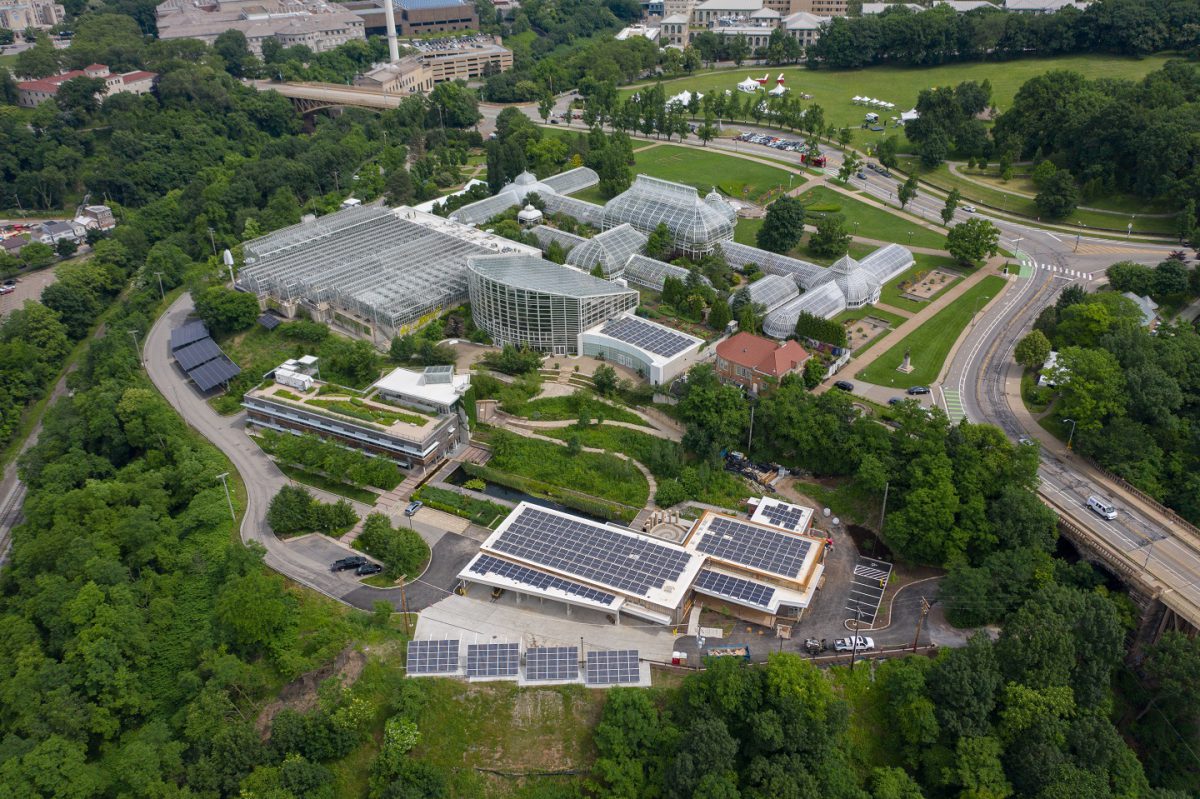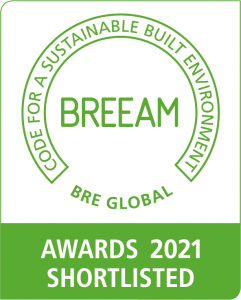Center for Sustainable Landscapes - BRE Group
Center for Sustainable Landscapes is a historic garden for the future
Background
The Center for Sustainable Landscapes (CSL) is a 24,350-square-foot education, research and administration facility at Phipps Conservatory and Botanical Gardens, a public garden attraction in Pittsburgh, Pennsylvania, USA. It is designed to generate all of its own energy and treat and reuse all water captured on site. The CSL is the first facility in the world to meet four of the world’s highest green construction standards: The Living Building Challenge, WELL Building Platinum, SITES Platinum and LEED® Platinum. Now it adds the distinctive BREEAM In-Use rating of Outstanding to its resume.
The core function of the CSL is to increase awareness of the interconnection between the natural and built environment. It also demonstrates the efficacy of sustainable systems for Phipps, a 127-year-old institution that receives over 500,000 visitors annually.
Its design invites exploration while seamlessly integrating with the guest experience. This makes it uniquely positioned to showcase renewable energy technologies, conservation strategies, water treatment systems and sustainable landscaping to a broad audience, including many who are engaging with these topics for the first time.

Solutions
Land use (score: 100%)
Phipps has a dedicated facilities team that manages and maintains the entire campus in a sustainable manner. Sustainable operations and maintenance plan and policies are in place to support the team.
In line with Phipps mission, Phipps performed environmental assessments which resulted in extensive remediation, and created a biodiversity action plan that informed the design and construction process and will regenerate the site over time.
Materials (score: 90%)
Phipps payed special attention to specifying and purchasing products and materials that are robust, contain minimal amounts of embodied energy and water, are circular (cradle to cradle), and contain no red list chemicals. This promoted a healthy environment, interior and exterior, and increase occupant health and productivity. The team also considered the management of natural hazards like landslides and wildfires.
Energy (score: 96.67%)
Phipps is dedicated to energy conservation and the CSL was designed with efficient wall, glazing and ventilation systems. It is a net zero energy building and maintains a robust building automation system. It sub-meters energy so the facilities team can analyse data and address issues as they arise.
Water (score: 96.15%)
Phipps is dedicated to water conservation and maintains an innovative water reclamation system. It sub-meters water so the facilities team can analyse data and address issues as they arise.
The innovative water reclamation system depends on stormwater collection. Between 50 – 75% of the CSL’s water consumption is from alternative sources. In a wetter year, the percentage may be closer to 100%.
Health and wellbeing (score: 94.59%)
Phipps is dedicated to wellness, occupant health and productivity, and environmental health. Daylighting, glare protection, personal thermal and ventilation controls, attention to IAQ, and the wellness program are particularly well designed and maintained.
Other environment technologies
Additional technologies and strategies employed in the CSL include, but are not limited to, photovoltaic arrays, a vertical axis wind turbine, geothermal wells, a rooftop energy recovery unit, a green roof, a desiccant dehumidification system, a direct digital control building management system with interactive touchscreen user interface, a solar-powered water distillation system, phase-change materials, mechanical windows, a rainwater harvesting system, a lagoon and constructed wetlands, rain gardens and permeable paving. These all operate together within a single site. Operational strategies – from a high-performance building envelope to maximized daylight autonomy – also help Phipps meet its net-zero energy and net-zero water goals.

Benefits
BREEAM In-Use enabled the team to maintain building management success by overcoming challenges, confirming design strategies and aligning ongoing values.
Overcoming challenges
In support of the CSL’s lofty green goals, BREEAM In-Use helped the team to overcome challenges to maintain performance.
BREEAM In-Use provided opportunities to educate and bring people to the table. Phipps’ pursuit of certifications, including BREEAM In-Use, provided opportunities for the team to knowledgeably speak with a range of professionals to explain what they were doing and why, shoring up knowledge of and support for these types of projects. This promoted understanding and fostered a sense of ownership, particularly for the management staff.
In any organization, staff turnover presents the danger that your team may lose specialized knowledge of your building. A key team member transitioned from Phipps soon after the end of the certification process. But preparing the standard operating procedures helped the team retain years of institutional knowledge about the building’s particulars.
Confirming design strategies
The CSL’s original green goals, including net-zero water and energy consumption, had never before been accomplished in one project. BREEAM In-Use allowed the team to confirm that the design worked and the project’s original goals were still being met. The ongoing reporting required by BREEAM In-Use will help us demonstrate that it continues to meet our goals.
Thanks to an energy use intensity (EUI) of 18, which is 73.8% less than the EUI of a typical office building, the CSL generated 3,000 kWh more than it used in its last year of operation. Compared with a conventional office building of the same size, the cost of operating the CSL over the next 30 years will save Phipps $3 million in energy costs and $140,000 in water costs.
Ongoing alignment of values
Phipps is passionate about doing its part to address climate change. Certification helps it walk the talk, compelling the team to think of the future when drafting plans and policies with improvement targets and environmental and operational resilience in mind. It also provides an opportunity to confirm that its management strategies and operational practices are, in fact, aligned with its values.
Ongoing accountability
In building management, there are inevitably challenges. The accountability of ongoing performance monitoring and verification helps the team to persevere in the face of challenging management situations.
Commitment to constant improvement
With both benchmarking and improvement pathways, BREEAM In-Use allowed the team to gauge existing performance and structure ideas for future projects. New research and best practices will use BREEAM In-Use as a testing opportunity to ensure that the values they originally prioritized are still important and in practice. The certification also provides a roadmap of new challenges to consider pursuing over time.
Staying ahead of industry best practices
The CSL also allows Phipps to leverage its leadership in certification achievement by introducing professionals, educators and the public to the inner workings of a sustainable facility. The CSL is designed to maximize interactivity through the sheer number of technologies and operational strategies on display. Seeing these technologies and strategies at work also showcases their potential replicability, with a goal of inspiring similar projects at the home, business and community levels.
Reinforcing the educational mission
Phipps hosts a sustainable training workshop program to give professionals a background on best practices and benefits of building green. It also provides a free online green building toolkit series which details the process behind Phipps’ green projects. The CSL’s dedicated classroom spaces give children a chance to connect to nature, instilling a sense of wonder and fostering the growth of tomorrow’s environmental stewards. The CSL is also a site of continued building performance research, in partnership with local universities Carnegie Mellon and the University of Pittsburgh, aimed at transforming the way that people relate to nature.


